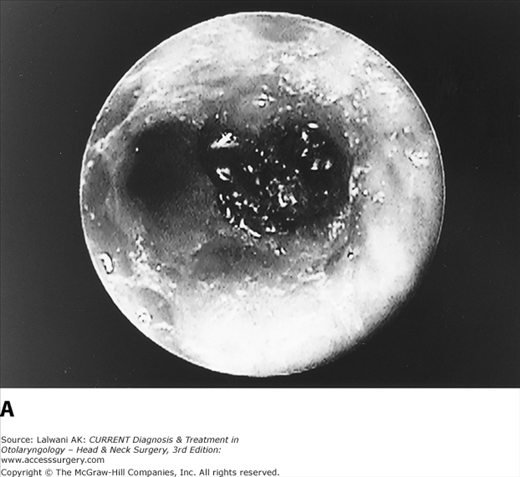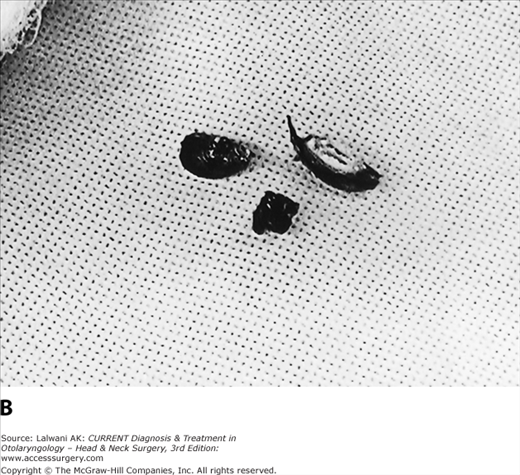Essentials of Diagnosis
General Considerations
Foreign body ingestion and aspiration are an important cause of morbidity and mortality in the pediatric population. Aerodigestive tract foreign bodies are the cause of approximately 150 pediatric deaths per year in the United States, and choking causes 40% of accidental deaths in children less than 1 y of age. Foreign bodies remain a diagnostic challenge as their presentation can vary from life-threatening airway compromise to subtle respiratory symptoms that are often misdiagnosed. A high level of clinical suspicion can prevent delays in diagnosis and complications related to these delays.
Pathogenesis
Most aerodigestive tract foreign bodies occur in children under the age of 4 y. The high incidence of aerodigestive foreign bodies in children of this age is related to their increased mobility, the introduction of adult food, a high propensity for placing objects in their mouths, incomplete dentition, and immature swallowing coordination. Other populations at risk for esophageal foreign bodies include psychiatric patients, patients with underlying esophageal or neurological disease, and edentulous adults. Coins are the most commonly ingested foreign body, whereas nuts and seeds are the most commonly aspirated foreign body (Figure 39–1). Although fortunately rare, the aspiration of latex balloons is associated with especially high mortality rates. In older children and adults, fish or chicken bones may lodge in the oropharynx.
Damage to the surrounding aerodigestive tract mucosa is related to the type of foreign body and the length of time the foreign body has been present. Granulation tissue formation, erosive lesions, and infections can occur over time and can be minimized with early diagnosis and surgical intervention.
Prevention
The prevention of ingestion is the most important intervention for potential aerodigestive tract foreign body ingestions. The Consumer Products Safety Act was passed in 1979 and includes criteria for the minimum size of objects >3.17 cm in diameter and >5.71 cm in length) allowable for children to play with, but these regulations are not uniformly enforced. Young children should remain under constant adult supervision and allowed to play only with age-appropriate toys. Small and hazardous objects should be safely stored so as not to be accessible to a newly mobile and curious child. Food should be age appropriate and presented only in an observed setting.
Clinical Findings
A witnessed ingestion or aspiration episode should be brought to the attention of a physician. Information that is important to elicit from parents includes the approximate time of ingestion, any history of esophageal dysfunction, and both the severity and the duration of swallowing and respiratory symptoms since the time of ingestion. When an unusual foreign body is aspirated or ingested, it may also be helpful to have the parents bring in a similar object from home.
Typical signs and symptoms of esophageal foreign body ingestion include drooling, dysphagia, emesis, food refusal, and chest pain. Esophageal foreign bodies may also cause respiratory symptoms in a young child. Airway foreign bodies may initially present with an episode of choking, gagging, and cyanosis followed by coughing, wheezing, and/or stridor. Physical examination may reveal asymmetric breath sounds or unilateral wheezing. However, the patient can become asymptomatic when the foreign body lodges more distally in the airway. This can make diagnosis difficult, especially when the initial event is unwitnessed. A high index of suspicion should be maintained when evaluating children presenting with a sudden onset of respiratory symptoms or with recurrent croup, asthma, or pneumonia without the expected response to treatment.





